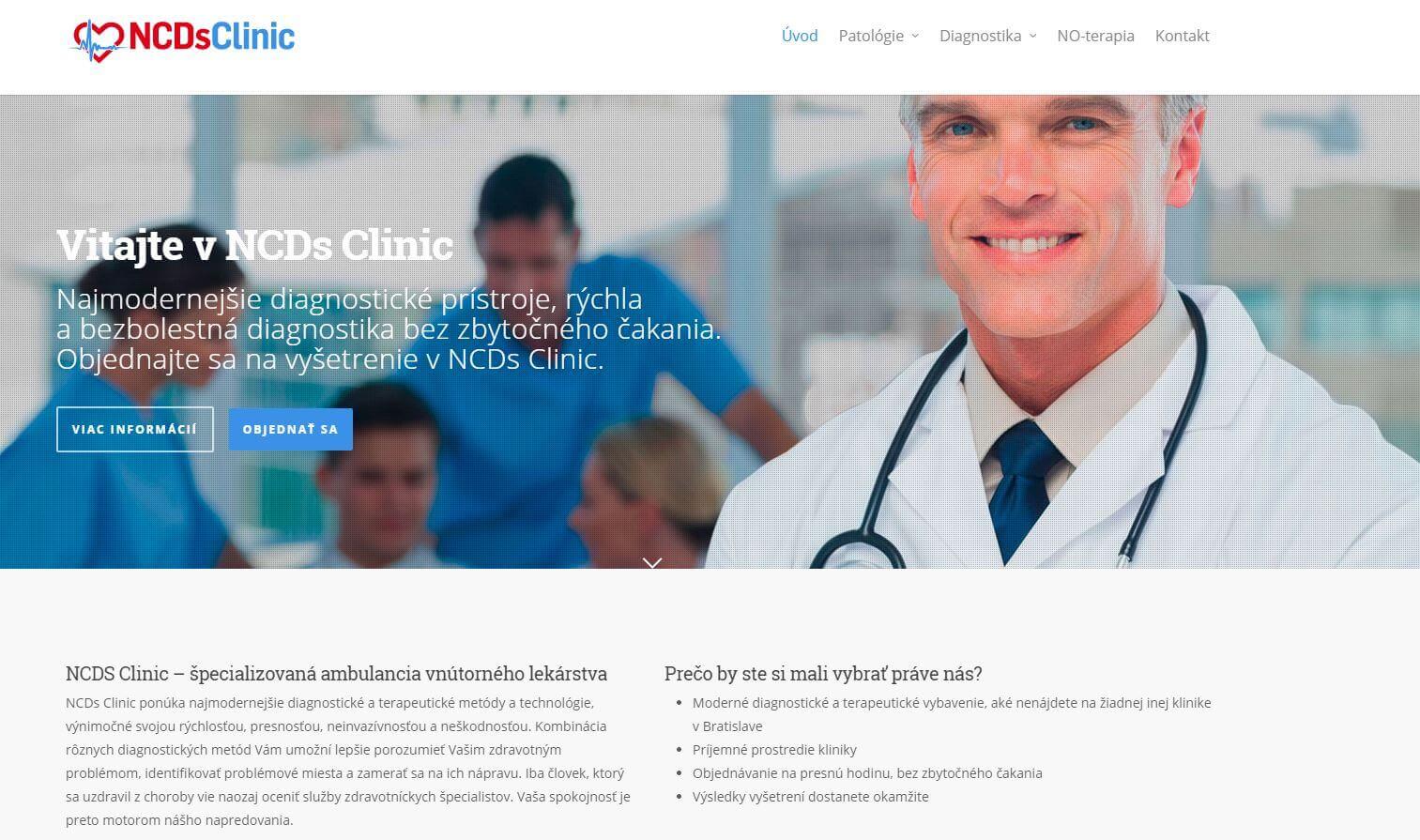Medical devices
search
news
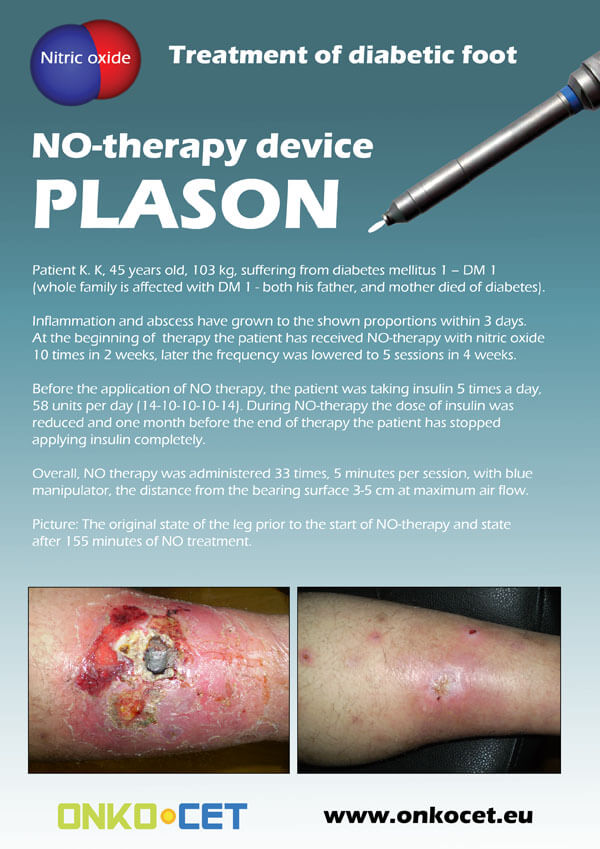
The PDF with the short report with pictures from the therapy of a diabetic foot can be viewed or downloaded here.
The pictures from the treatment of unhealing wounds an be found here:
http://www.onkocet.eu/en/produkty-detail/220/1/
The pictures from the treatment of unhealing wounds an be found here:
http://www.onkocet.eu/en/produkty-detail/293/1/
ONKOCET Ltd. has exhibited the devices from its portfolio on the MEDTEC UK exhibition in Birmingham, April 2011 through our partner Medical & Partners.
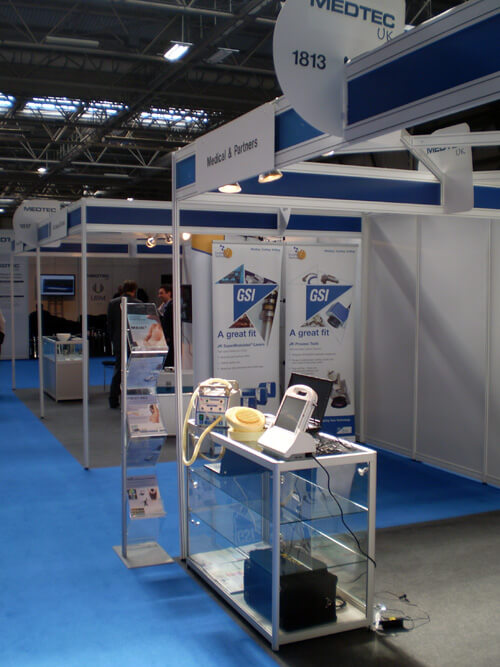
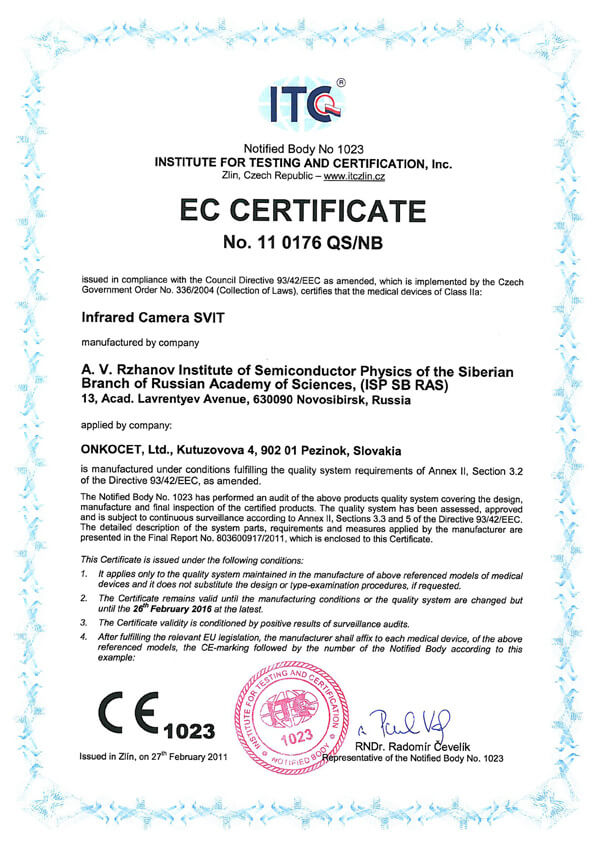 The ONKOCET company has successfully reached the certification of yet another medical device, Infrared Camera SVIT. The Certificate can be found here. The videos from the device operation can be found here.
The ONKOCET company has successfully reached the certification of yet another medical device, Infrared Camera SVIT. The Certificate can be found here. The videos from the device operation can be found here.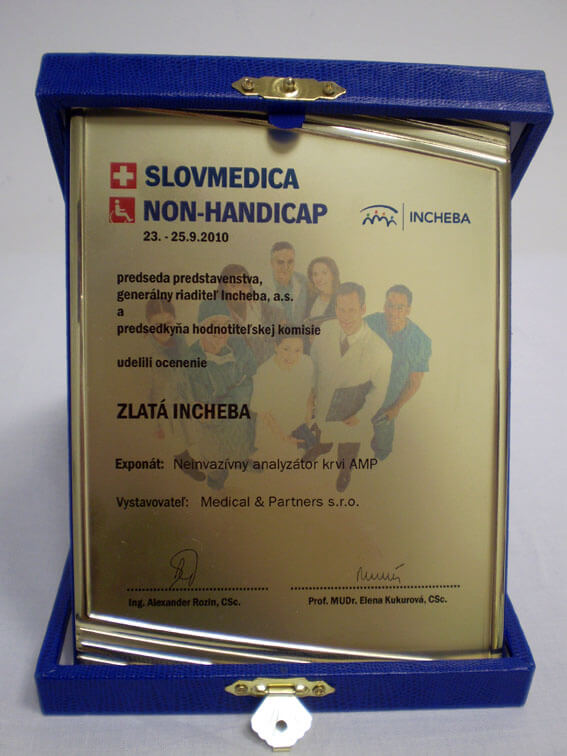 Our device, the non-invasive blood analyzer AMP has won the Golden Incheba prize at a medical exhibition SLOVMEDICA - NON-HANDICAP 2010. A big thank you goes to the organizers of the exhibition for acknowledging the quality of our device and to the exhibitor, the Medical & Partners company, for introduction of the AMP device to the medical public again.
Our device, the non-invasive blood analyzer AMP has won the Golden Incheba prize at a medical exhibition SLOVMEDICA - NON-HANDICAP 2010. A big thank you goes to the organizers of the exhibition for acknowledging the quality of our device and to the exhibitor, the Medical & Partners company, for introduction of the AMP device to the medical public again.We are pleased to inform our business partners, that our company has succesfully finished the certification process of Concor Soft Contact Lenses.
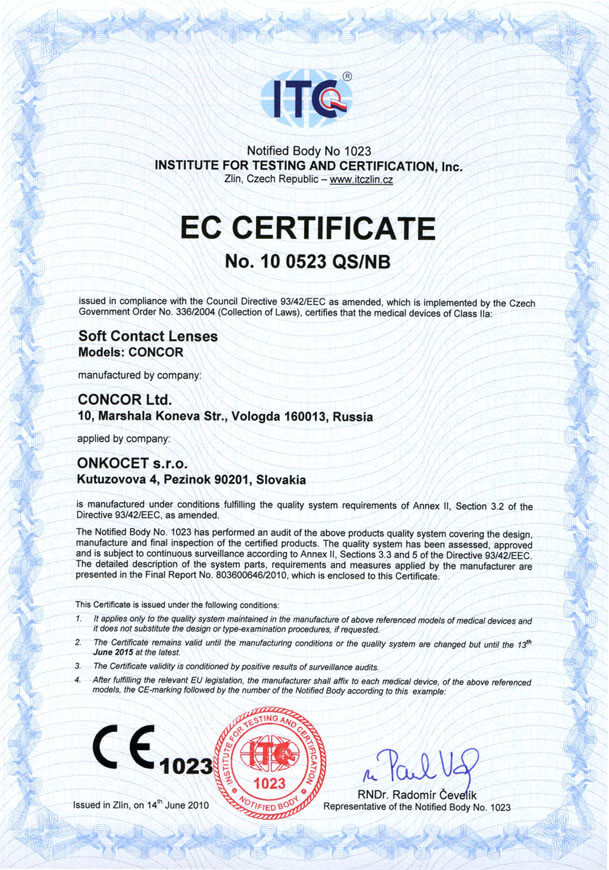 You can find the certificate here.
You can find the certificate here.More information on Concor Soft Contact Lenses go to section Medical preparations/Concor soft contact lenses, or follow this link.
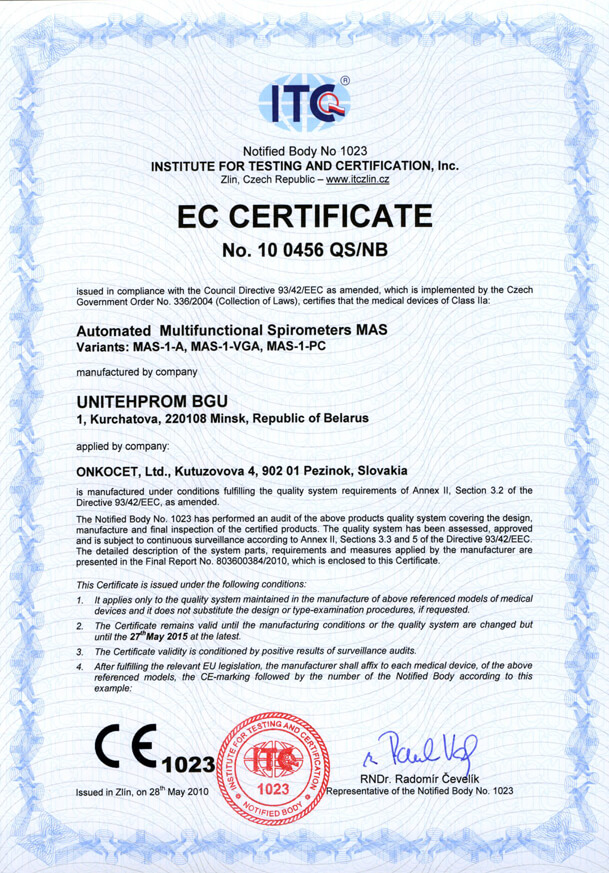 Our company has finished the certification process for another medical device, computerized spirometer MAS-1K with oximeter. You can find the device certificate here.
Our company has finished the certification process for another medical device, computerized spirometer MAS-1K with oximeter. You can find the device certificate here..jpg) Since May 2010 there is a new version of AMP device available.
Since May 2010 there is a new version of AMP device available.Follow this link if you want to see the pictures and specifications of the device.
http://www.onkocet.eu/en/produkty-detail/293/1/
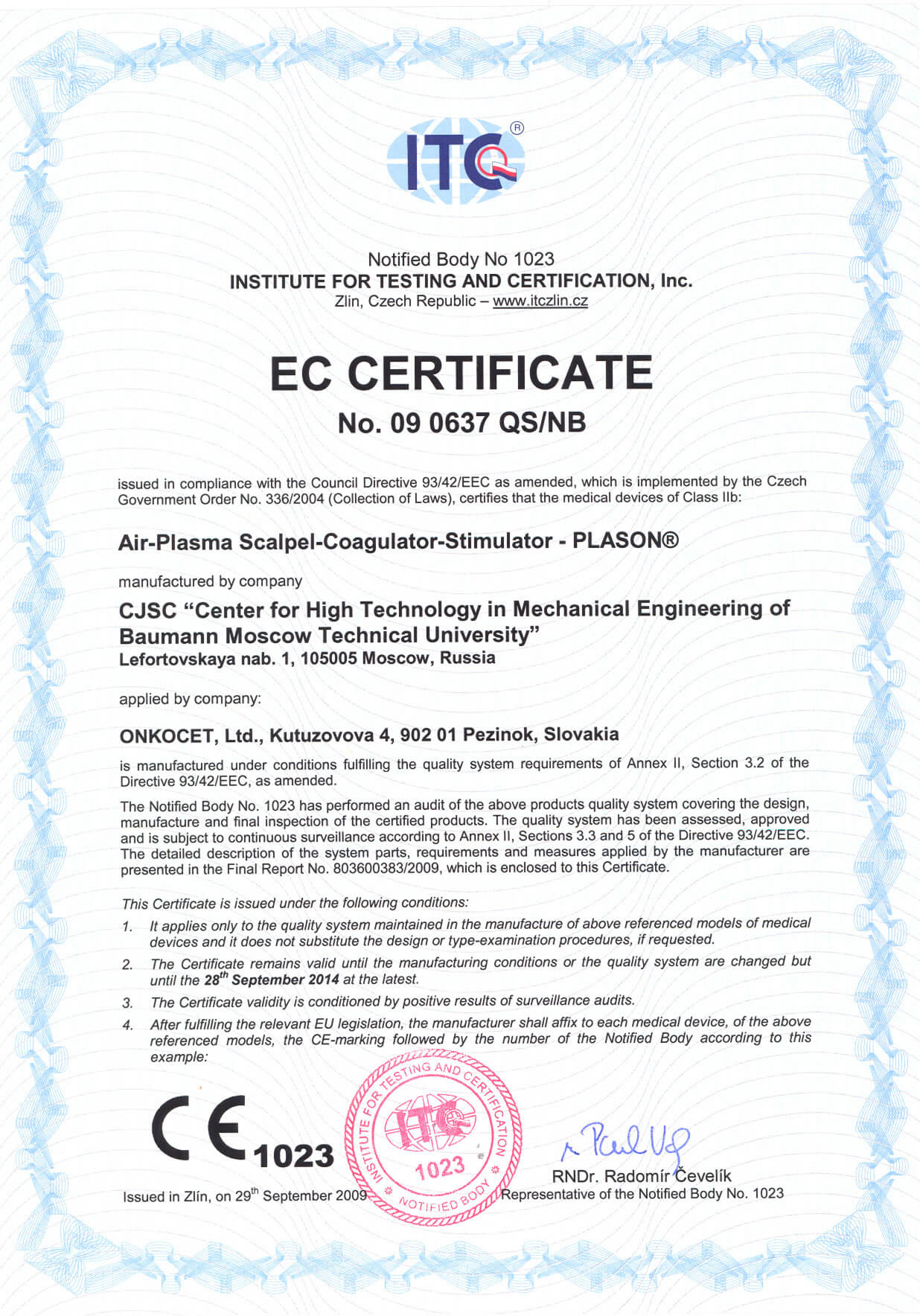 Dear partners,
Dear partners, In October 2009 we have received CE certificate for another device from our portfolio, NO therapeutical device PLASON. You can find more information about this revolutionary device, used for healing of unhealing wounds, diabetic foot, or for cosmetical purposes, at our webpage, section "Medical devices" -> PLASON-NO Therapy.
.gif)
Best regards
Team of ONKOCET Ltd. company
NO-therapy by cooled NO-CGF
Technology of conducting the sessions of NO-therapy by the narrowly-directed completely cooled NO-containing gas flow.
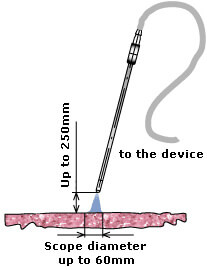 The application of labyrinth type additional cooler makes it possible to completely cool the air-plasma flow (APF) to the ambient temperature. For obtaining the narrowly-directed NO-containing gas flow (NO-CGF) of room temperature it is necessary to establish any manipulator in the nest of additional cooler and to include him. The cooled flow will be given to the object through the flexible silicone tube and the metallic tip, which is made in the form the thin-walled tube with a diameter of 4 mm from biologically inert materials. Localization and focusing is achieved by the calibration of the tip outlet. For the satisfaction of the existing today tasks for the NO-therapy by optimum the diameter of the tip outlet is less than 1 mm. The application of narrowly-directed completely cooled NO-CGF makes it possible to act on the region of pathology from any distance - to 250 mm.
The application of labyrinth type additional cooler makes it possible to completely cool the air-plasma flow (APF) to the ambient temperature. For obtaining the narrowly-directed NO-containing gas flow (NO-CGF) of room temperature it is necessary to establish any manipulator in the nest of additional cooler and to include him. The cooled flow will be given to the object through the flexible silicone tube and the metallic tip, which is made in the form the thin-walled tube with a diameter of 4 mm from biologically inert materials. Localization and focusing is achieved by the calibration of the tip outlet. For the satisfaction of the existing today tasks for the NO-therapy by optimum the diameter of the tip outlet is less than 1 mm. The application of narrowly-directed completely cooled NO-CGF makes it possible to act on the region of pathology from any distance - to 250 mm.

The complete cooling of the NO-containing gas flow makes it possible to use it with working of cavities in the diverse variants:
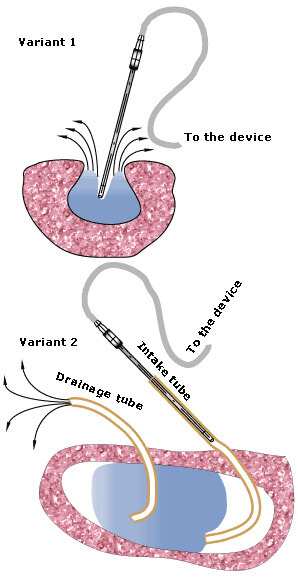
Version 1
If cavity has a form of pocket and an opening, with which it is connected with the surrounding space, it is more than the diameter of metallic tip, then the latter directly is introduced into the opening of connection. Located in the cavity (pocket) air is displaced by forced NO-CGF. The atmosphere with the increased content of the nitrogen oxide is created after a certain time in the cavity.
Version 2
Connection of metallic tip to the already existing or specially established vent lines makes it possible to process by the nitrogen oxide practically any internal cavities of man.
For this metallic tip is connected airtightly up to the vent line (tube of supply) established in the cavity. NO-CGF injects rocking into the workable cavity, and the gas located in it emerges through another tube, which connects cavity with the surrounding space (tube of discharge).
The version of working cavities with the aid of the two-clearance drainages (Fig. a) or of the coaxial (tube in the tube) version of introduction NO-CGF into the cavity (Fig. b), and also the supply of the nitrogen oxide to the region of pathology through the puncture needles and the biopsy channels of endoscopic instruments are possible.

